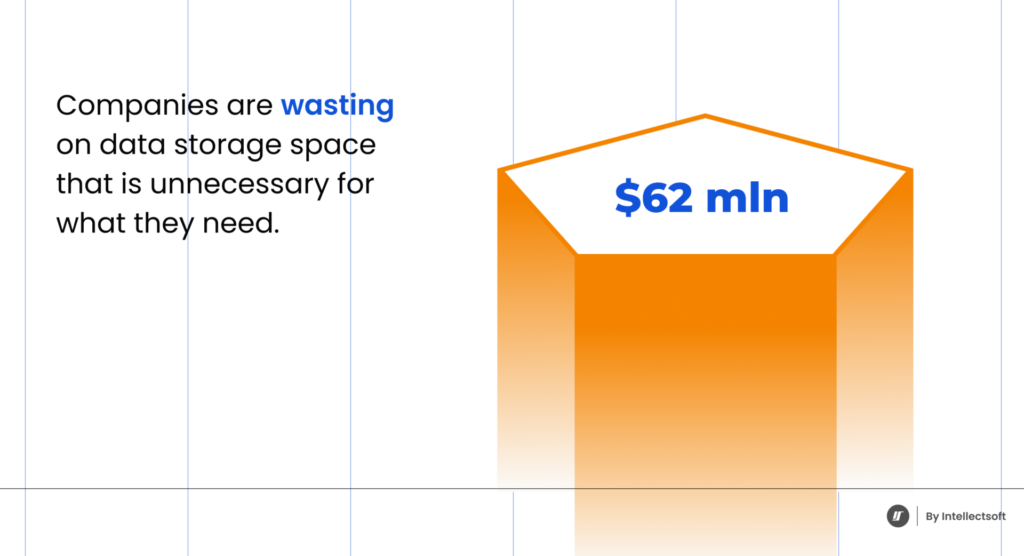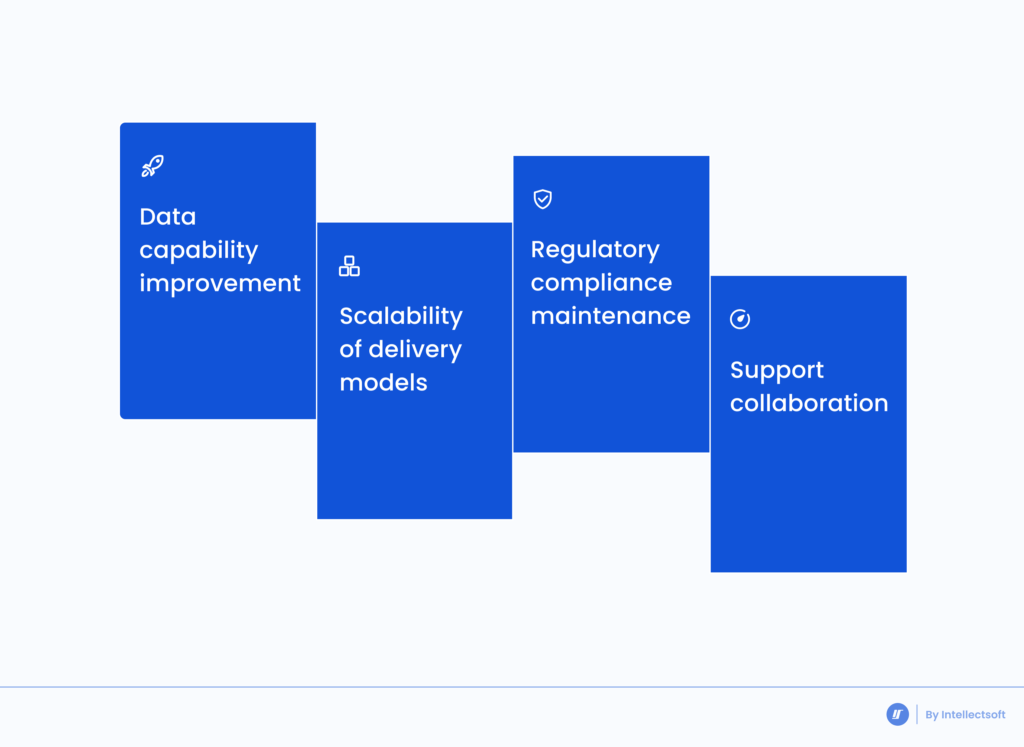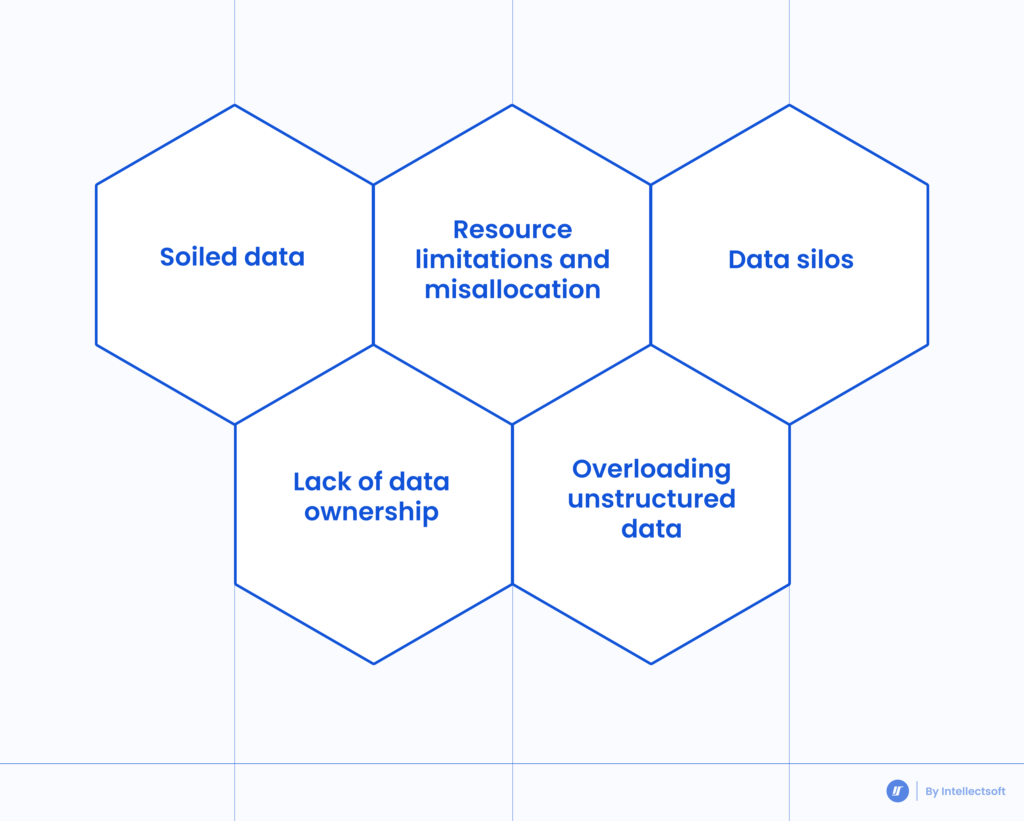At least 46% of businesses don’t have a formal strategy for data usage. Without effective data management, companies run the risk of mishandling sensitive data, noncompliance with data privacy regulations, and distributing data of significantly poor quality. Data governance (DG), a vital data management concept for enterprise systems, exists specifically to combat these potential issues.

Every aspect of data governance consists of the management processes of the use, availability, integrity, and safeguards associated with all internal data within different enterprise systems. Companies are wasting $62 million on data storage space that is unnecessary for what they need and this is a clear example of the importance of having consistently trustworthy data and data standards that help to prevent its misuse.
By implementing simple data governance models data governance challenges can be avoided, save companies time, and strengthen company profits. While there are some obstacles that surround this concept, there are solutions to overcome them.
Recognizing the Importance of Modern Data Governance
In the “information era” rapidly evolving technologies, and cutting-edge analytics and where massive amounts of data are used every day to drive critical business processes and decisions, data governance plays a vital role in every organization. From setting data management rules and regulations to measuring data quality and defining data interpretation processes, the benefits of following data management best practices are essential for forming proper business planning methods, and accounting approaches, and limiting operational risk.
Enterprise data governance challenges present companies with a wide range of potential problems that could affect their resource allocation tactics, operational decision-making, and revenue sustainability. If a corporation intends to be “data-driven” it must successfully adopt data governance which is an ongoing problem for a variety of companies across multiple industries. DG lays the foundation for organizational data and it gives meaning to all the data that a company has.
This concept is important because it streamlines digital transformations and ensures the accuracy and reliability of all data that a company uses. The main purpose of DG is to optimize the quality of data and to decrease the chance that internal data is incomplete, inaccurate, or duplicated.

The Top Data Governance Issues and How to Solve Them
Some of the biggest challenges revolve around a lack of data control. Uncontrolled data results, misuse of resources and noncompliance with regulatory mandates are some of these issues. Due to problems like this, companies often struggle with identifying what to avoid when implementing a data governance program. For example, some of the most commonly made mistakes with data governance are having
- Unclear objectives
- Data that is inconsistent or unrelated to what the business specifically needs
- Not enough focus on data organization processes and too much on individual tools
- Silo prevention tactics that come too late
Additionally, data management challenges can address a variety of other hurdles. Whether poor risk management decisions, data loss, data breaches, or unregulated environments, the data governance framework is designed to adapt to these obstacles through its four pillars. The four pillars of DG include:

To get a better understanding of why challenges of data governance and data governance risk are often complex, it’s best to get an idea of the type of problems companies often face, why these key data governance issues occur, and the potential solutions that could remedy them.

Soiled Data
The problem with soiled data is that it causes a range of data governance issues. Some of these could be productivity losses and a waste of resources. At least 26% of global companies have bad data. Another word for this is “dirty data” and it can cause company budgets to be used incorrectly which often causes a downward dive in revenue.
Soiled data is any information that isn't accurate, that’s inconsistent, incomplete, insecure, or simply outdated. One of the key challenges for data governance is exactly this as it contributes to the dysfunction of enterprise databases. Without eliminating dirty data before implementing data governance practices, they won’t be as effective. To get rid of flawed data, you'll have to reassess the infrastructure of your company’s data management processes. Basically, instead of cleaning up what’s already dirty, you should, in a sense start over.
Resource Limitations and Misallocation
Better resource allocation can help to establish more accurate decision-making and data collection processes. A lot of the time, misallocation stems from a scarcity of resources altogether. This can sometimes happen when a corporation doesn’t have the capacity to develop a program dedicated to key challenges for data governance.
Not having proper resources for issues in data governance can result in additional problems. It can inhibit the use of business intelligence and artificial intelligence tactics. To strengthen your data governance approach, know what should be assigned to who. Determining this starts with a better understanding of a company’s data and what that corporation actually requires. As a tip, making use of data lineage is a good approach for visualizing the data. It will also help with forming a more in-depth understanding of what data is being collected.
Using master data management (MDM) is a useful consideration as well. This is a form of technology that helps to make use of master data coordination across an entire company.
Data Silos
Data silos are a form of insular management. What this means is that this type of system doesn’t have the capability to reciprocate information and is unable to talk to other systems. The data they collect is owned by one department within a company. However, that same data isn’t accessible to other groups within that same company. In other terms, data silos are formations of data that aren’t compatible with internal multi-departmental communications.
Data silos, unfortunately, put strain on the user limitations of enterprise data. This also limits the use cases for that same data which negatively alters business decision-making and proper collaboration. Overall, most companies don’t assume that data silos are much to worry about initially and this is where the issues arise. Over time, they become more problematic and limit data strategy options. By that point, data analytics and analysis methods will have already become unnecessarily complex.
Lack of Data Ownership
A common misconception is that IT has full ownership over a company’s data. This is untrue and really, ownership over data involves various departments. The best way to approach forming the proper structure of ownership is to develop an ownership model. Ownership of enterprise data is often split into three different categories;
- Ownership; includes full responsibility as well as possession of that information
- Stewardship; oversight of usability, safety, trustworthiness, and accessibility of data assets including quality
- Custodianship; assembly and storage of data sets including data use case determination
It’s important to realize that data governance is a compilation of different procedures and policies that are used to aid the functioning of an enterprise database. Data governance is technically different from data ownership, stewardship, and other facets of data control. They all, however, do work together and without one, another component may not be as effective. For example, without data stewardship, ownership of data won’t be as simple to follow. Without data security, data governance, regardless of its success, could still experience a data breach or problems with data access.
Implementing an ownership model will help to determine those that have direct access and control of a company’s information. This affects accountability, the stability of a company’s database, as well as the levels of security surrounding that data. Having a lack of data ownership will often result in a higher potential of the quality and accuracy of data suffering.
Companies often plan to diversify their risks and this is why at least 42% of businesses have no appointed data owner at all. In general, the majority of corporations default to leaning completely on IT for taking on the role of data ownership and use. This is one of the most common reasons that an organization would experience issues with data governance.
Overloading Unstructured Data
Unstructured data wastes company time and funds. It takes a long time to process, there is no standardization involved, and the conversion of it to useful information can come with a hefty price tag. There are multiple ways to limit the challenges in data governance associated with unstructured data.
Businesses can ensure that they only utilize trusted data sources. They can also establish policies that limit the incidents of data becoming unstructured. Additionally, all bad and irrelevant data should be disposed of properly instead of allowing it to accumulate.
Final Thoughts
Data governance problems can stall company operations and cause a loss of funds. Irrelevant and inaccurate data only contributes to the problems that multiple data silos and poor resource allocation presents. The main issue behind failing data governance strategies is the complete lack of proper data housing. If companies continue to allow their departments to operate as disconnected entities, there will never be a clear picture of enterprise data, how it works, and how relevant and accurate it truly is.
Consider Intellectsoft Your Trusted Partner
Intellectsoft focuses on designing and delivering cutting-edge technology solutions for companies across the globe. With specific expertise in digital transformation and product engineering, Intellectsoft offers services tailored to solving a variety of enterprise data and technology problems.
Streamlining data usage and internal approaches to a variety of some of the most unique and biggest challenges in data governance is simple with the right form of help. Our knowledgeable and experienced team specializes in cloud computing and workflow automation, and big data processing, and offers consulting services. Your business will benefit from an effective and custom software development solution that takes your project from end to end with enhanced efficiency and no confusion. To get started, learn more about our services.
FAQ
Are challenges of data governance avoidable and can they help to better a company’s decision making processes?
Yes, data governance issues are avoidable with the right preventive measures and expert guidance. It can also help with the way a company uses its data to make better-informed decisions.
What are the most featured ways to approach data management and address using data governance the right way?
Developing a data strategy is the top solution for approaching data governance issues. Ways that common challenges in managing data can be addressed using data governance will require establishing an appropriate governance model, identifying potential risk factors, and ensuring your data is adaptable.
